A small molecule inhibitor of PTP1B and PTPN2 enhances T cell anti-tumor immunity
- PMID: 37500611
- PMCID: PMC10374545
- DOI: 10.1038/s41467-023-40170-8
A small molecule inhibitor of PTP1B and PTPN2 enhances T cell anti-tumor immunity
Abstract
The inhibition of protein tyrosine phosphatases 1B (PTP1B) and N2 (PTPN2) has emerged as an exciting approach for bolstering T cell anti-tumor immunity. ABBV-CLS-484 is a PTP1B/PTPN2 inhibitor in clinical trials for solid tumors. Here we have explored the therapeutic potential of a related small-molecule-inhibitor, Compound-182. We demonstrate that Compound-182 is a highly potent and selective active site competitive inhibitor of PTP1B and PTPN2 that enhances T cell recruitment and activation and represses the growth of tumors in mice, without promoting overt immune-related toxicities. The enhanced anti-tumor immunity in immunogenic tumors can be ascribed to the inhibition of PTP1B/PTPN2 in T cells, whereas in cold tumors, Compound-182 elicited direct effects on both tumor cells and T cells. Importantly, treatment with Compound-182 rendered otherwise resistant tumors sensitive to α-PD-1 therapy. Our findings establish the potential for small molecule inhibitors of PTP1B and PTPN2 to enhance anti-tumor immunity and combat cancer.
© 2023. The Author(s).
Conflict of interest statement
F.W. and T.T. are inventors on pending patents related to this work filed by Monash University and the Peter MacCallum Cancer Centre. T.T. is on the scientific advisory board of DepYmed. Z.Y.Z. is a co-founder and serves on the scientific advisory board of Tyligand Bioscience. N.D.H. is a founder and shareholder in oNKo-Innate. N.D.H. serves on an advisory board for Bristol Myers Squibb. The remaining authors declare no competing interests.
Figures


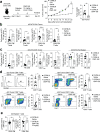
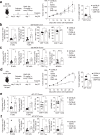
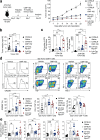
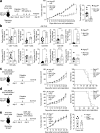
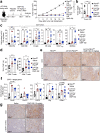
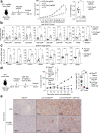
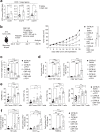
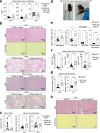
Update of
-
A small molecule inhibitor of PTP1B and PTPN2 enhances T cell anti-tumor immunity.bioRxiv [Preprint]. 2023 Jun 28:2023.06.16.545220. doi: 10.1101/2023.06.16.545220. bioRxiv. 2023. Update in: Nat Commun. 2023 Jul 27;14(1):4524. doi: 10.1038/s41467-023-40170-8. PMID: 37397992 Free PMC article. Updated. Preprint.
Similar articles
-
A small molecule inhibitor of PTP1B and PTPN2 enhances T cell anti-tumor immunity.bioRxiv [Preprint]. 2023 Jun 28:2023.06.16.545220. doi: 10.1101/2023.06.16.545220. bioRxiv. 2023. Update in: Nat Commun. 2023 Jul 27;14(1):4524. doi: 10.1038/s41467-023-40170-8. PMID: 37397992 Free PMC article. Updated. Preprint.
-
Synthesis and structure-activity optimization of azepane-containing derivatives as PTPN2/PTPN1 inhibitors.Eur J Med Chem. 2024 Apr 15;270:116390. doi: 10.1016/j.ejmech.2024.116390. Epub 2024 Apr 5. Eur J Med Chem. 2024. PMID: 38604096
-
Differential regulation of endoplasmic reticulum stress by protein tyrosine phosphatase 1B and T cell protein tyrosine phosphatase.J Biol Chem. 2011 Mar 18;286(11):9225-35. doi: 10.1074/jbc.M110.186148. Epub 2011 Jan 7. J Biol Chem. 2011. PMID: 21216966 Free PMC article.
-
[Research progress of several protein tyrosine phosphatases in diabetes].Sheng Li Xue Bao. 2010 Apr 25;62(2):179-89. Sheng Li Xue Bao. 2010. PMID: 20401454 Review. Chinese.
-
PTPN2: Advances and perspectives in cancer treatment potential and inhibitor research.Int J Biol Macromol. 2025 Jun;316(Pt 1):144740. doi: 10.1016/j.ijbiomac.2025.144740. Epub 2025 May 27. Int J Biol Macromol. 2025. PMID: 40441553 Review.
Cited by
-
Recent Developments in the Role of Protein Tyrosine Phosphatase 1B (PTP1B) as a Regulator of Immune Cell Signalling in Health and Disease.Int J Mol Sci. 2024 Jun 29;25(13):7207. doi: 10.3390/ijms25137207. Int J Mol Sci. 2024. PMID: 39000313 Free PMC article. Review.
-
Farrerol alleviates insulin resistance and hepatic steatosis of metabolic associated fatty liver disease by targeting PTPN1.J Cell Mol Med. 2024 Sep;28(18):e70096. doi: 10.1111/jcmm.70096. J Cell Mol Med. 2024. PMID: 39289804 Free PMC article.
-
Ursonic acid from medicinal herbs inhibits PRRSV replication through activation of the innate immune response by targeting the phosphatase PTPN1.Vet Res. 2024 May 23;55(1):67. doi: 10.1186/s13567-024-01316-8. Vet Res. 2024. PMID: 38783392 Free PMC article.
-
An integrated approach for novel PTP1B inhibitor screening: combining machine learning models, molecular docking, molecular and dynamics simulations.Mol Divers. 2025 Jul 21. doi: 10.1007/s11030-025-11292-6. Online ahead of print. Mol Divers. 2025. PMID: 40690114
-
Modulation of anti-tumour immunity by XPO1 inhibitors.Explor Target Antitumor Ther. 2025 Apr 23;6:1002310. doi: 10.37349/etat.2025.1002310. eCollection 2025. Explor Target Antitumor Ther. 2025. PMID: 40291981 Free PMC article. Review.
References
Publication types
MeSH terms
Substances
Grants and funding
LinkOut - more resources
Full Text Sources
Other Literature Sources
Medical
Molecular Biology Databases
Research Materials
Miscellaneous

